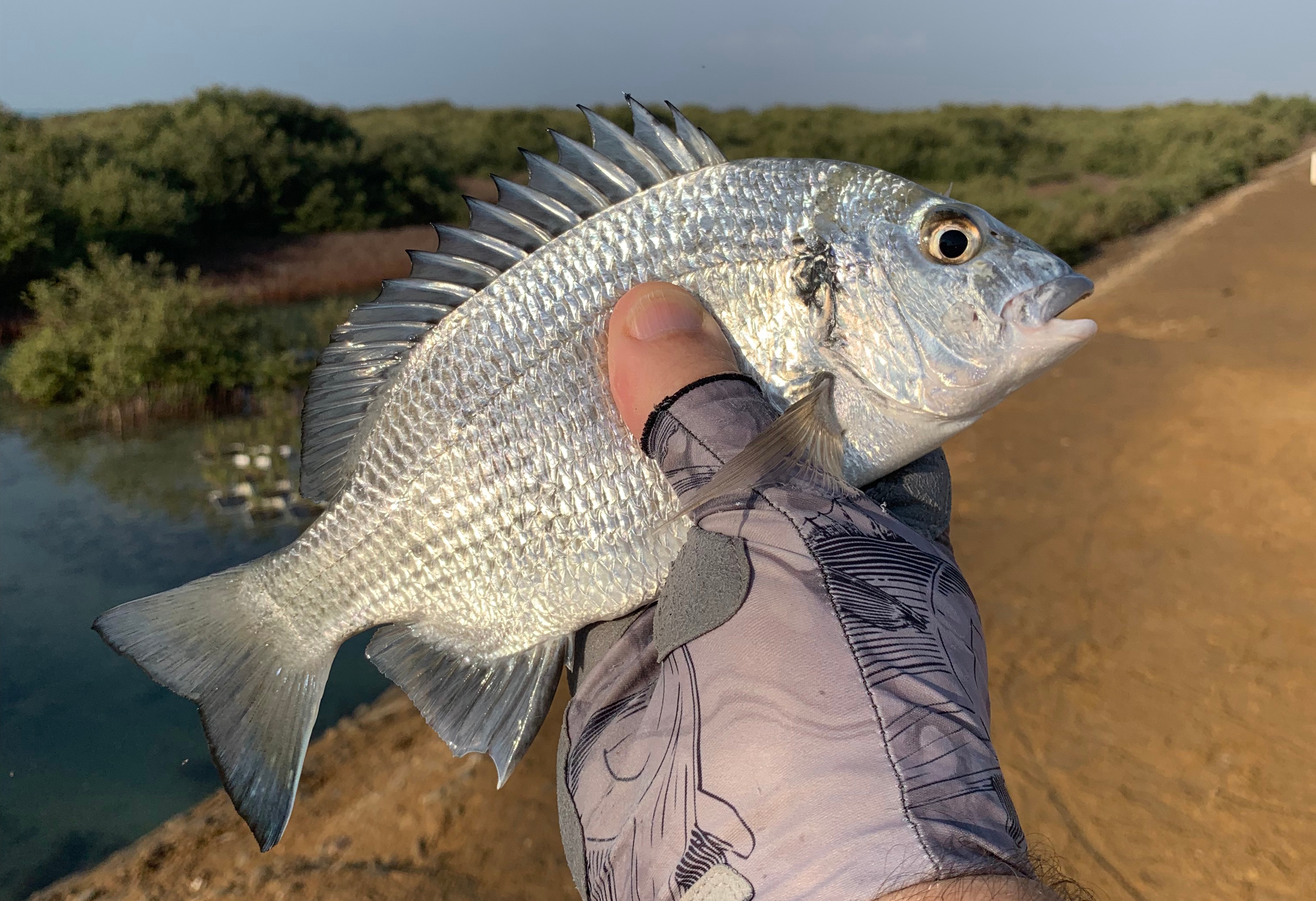The tale of Bev Bradley’s Bream and the VPR's fish supper

Distinct features of the gill cover and pectoral fin are among the physical differences that led KAUST Vice President for Research Donal Bradley to believe that he had discovered a new species of sea bream, now confirmed and named, Acanthopagrus oconnorae, or Bev Bradley’s Bream for short. Photo: Donal Bradley / ©KAUST2022
Avid fishers from the shoreline at King Abdullah University of Science and Technology (KAUST) near Thuwal, Saudi Arabia know well the three common species of Red Sea sea bream: the goldsilk, or picnic sea bream (Acanthopagrus berda), the double-bar sea bream (Acanthopagrus bifasciatus) and the haffara sea bream (Rhabdosargus haffara). And now they know one more, thanks to KAUST Vice President for Research Dr. Donal Bradley, Distinguished Professor of Materials Physics, and self-described "piscatorial ichthyologist" — a phrase coined by Bradley that refers to one who studies fish by fishing.
"I had been catching both Acanthopagrus species (mostly A. berda) for a while by bait fishing with shrimp and sometimes squid or bread," Bradley said. "I noticed that some of the fish I caught, although superficially similar to A. berda, had some distinctly unique features."
The "new fish" had a more shallowly sloping forehead, a distinct black patch on the rearward edge of the gill cover, a more yellowish pectoral fin, and paler body color. Bradley was not able to find it in any fish-guide books or websites.
In February 2021, Bradley asked marine scientist and Director of the KAUST Red Sea Research Center (RSRC) Dr. Mike Berumen if this could be a new species, providing him with a fin clipping from the "new fish" and, for comparison, a clipping from a standard A. berda caught at the same time.
Berumen's team undertook a genetic analysis, sparking a more detailed study, with results that were sufficiently interesting to prompt an email thread among Berumen's team with the subject line: "I hope the VP hasn't eaten that fish."
Unfortunately, he had. Bradley redoubled his fishing efforts, hoping to catch some specimens of what was now considered a new species.
"Catching more samples proved difficult for a while, prompting my younger daughter to suggest to my wife that I had probably found an unrecognized species and also made it extinct," Bradley said.
Also enlisted in the quest to find the fish was Ph.D. student Collin Williams, the then vice president of the KAUST Fishing Club. Eventually, Bradley caught one, and Williams, with others from RSRC, used a tidal trap on the KAUST North Beach to catch more. A detailed study of these specimens included direct comparison of their physical morphology and genetics with other sea bream from the region (A. berda, A. bifasciatus and R. haffara), Arabian Gulf (A. arabicus, A. sheim, and A. catenula), and with records online.

A common species of sea bream from the Red Sea, Ancanthopagrus bifasciatus, caught by bait fishing with shrimp. Photo: Donal Bradley / ©KAUST2022
Finally, the “new fish” was determined to be a distinct species with its closest relative, the Wandering Sea Bream (A. vagus), inhabiting long stretches of the Indian Ocean coast of South Africa and Mozambique.
A recently published paper in the Journal of Fish Biology, Acanthopagrus oconnorae, a new species of seabream (Sparidae) from the Red Sea, details the findings.
